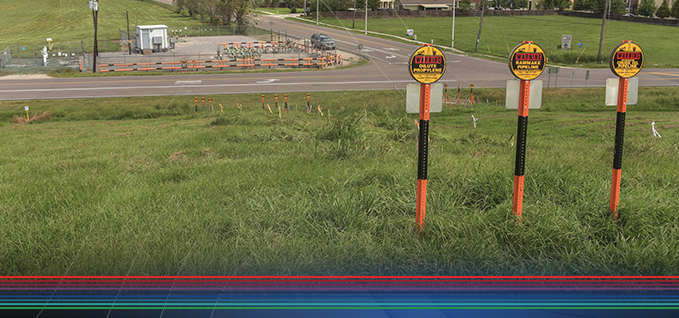In the event of an emergency, first call 911, then call our 24/7 emergency number, 1-800-537-5200. Please report any unusual sounds, smells or suspicious activity. Call us anytime with your questions or concerns.
Petroleum pipelines carry both gaseous and liquid materials that can burn or explode if exposed to a spark or other ignition source. Many liquids form gaseous vapor clouds when released into the air. Pipelines may contain colorless and odorless products. Some pipeline gases are lighter than air and will rise. Others are heavier than air and will stay near the ground, collecting in low spots.
Any pipeline leak is potentially dangerous.
 How to recognize signs of a release
How to recognize signs of a release
Markers that indicate the location of pipelines may include warning signs, aerial patrol markers, casing vents and painted metal, and wooden or plastic posts.
By sight:
- Liquid or frozen ground near a pipeline right-of-way
- Water bubbling or being blown into the air
- Discolored or abnormally dry soil
- Rainbow or oily sheen on water surfaces
- A fire or explosion
- Dense white cloud or fog
- Discolored vegetation
By sound:
- Unusual noises, such as hissing or roaring
By smell:
- Unusual petroleum, chemical or sulfuric “rotten egg” smell
 If a leak occurs
If a leak occurs
- Immediately leave the area and move upwind from the suspected release.
- Do not touch, breathe or make contact with the suspect liquid.
- Do not use a lighter or match, start an engine, use a mobile phone or light switch, or do anything that might create a spark.
- Do not drive into a release or its associated vapors.
- From a safe location: First call 911. Then call ExxonMobil Pipeline's emergency number: 1-800-537-5200.
Do not attempt to operate any pipeline valves or other equipment, as this could make the situation worse.
